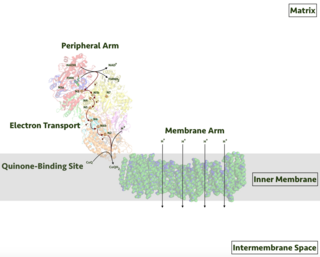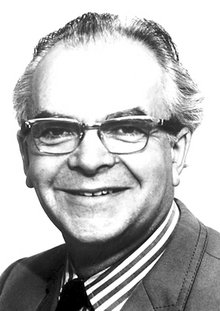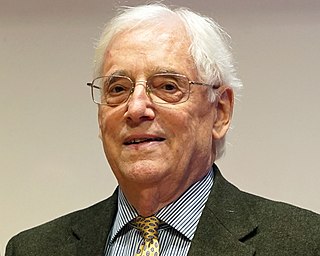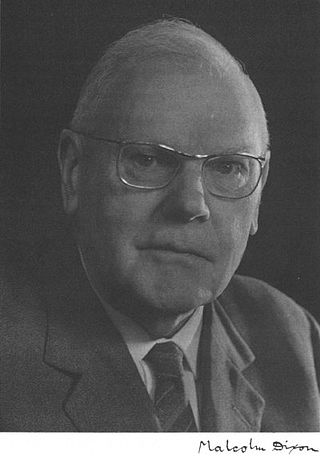Related Research Articles

Cytochromes are redox-active proteins containing a heme, with a central iron (Fe) atom at its core, as a cofactor. They are involved in electron transport chain and redox catalysis. They are classified according to the type of heme and its mode of binding. Four varieties are recognized by the International Union of Biochemistry and Molecular Biology (IUBMB), cytochromes a, cytochromes b, cytochromes c and cytochrome d.

Oxidative phosphorylation or electron transport-linked phosphorylation or terminal oxidation is the metabolic pathway in which cells use enzymes to oxidize nutrients, thereby releasing chemical energy in order to produce adenosine triphosphate (ATP). In eukaryotes, this takes place inside mitochondria. Almost all aerobic organisms carry out oxidative phosphorylation. This pathway is so pervasive because it releases more energy than alternative fermentation processes such as anaerobic glycolysis.

Respiratory complex I, EC 7.1.1.2 is the first large protein complex of the respiratory chains of many organisms from bacteria to humans. It catalyzes the transfer of electrons from NADH to coenzyme Q10 (CoQ10) and translocates protons across the inner mitochondrial membrane in eukaryotes or the plasma membrane of bacteria.
Greenhead College is a sixth form college, and former grammar school, located in Huddersfield, in the county of West Yorkshire, England. The current principal is Simon Lett. With over 2,700 students, it is a large sixth form college, attracting students from as far afield as Wakefield, Manchester, Barnsley, Bradford, Leeds, Halifax, Wetherby and even Wales. It is located next to Greenhead Park which is one of the largest parks in Huddersfield.

Sir Alan Roy Fersht is a British chemist at the MRC Laboratory of Molecular Biology, Cambridge, and an Emeritus Professor in the Department of Chemistry at the University of Cambridge. He was Master of Gonville and Caius College, Cambridge from 2012 to 2018. He works on protein folding, and is sometimes described as a founder of protein engineering.

Peter Dennis Mitchell FRS was a British biochemist who was awarded the 1978 Nobel Prize for Chemistry for his theory of the chemiosmotic mechanism of ATP synthesis.

Sir John Ernest Walker is a British chemist who won the Nobel Prize in Chemistry in 1997. As of 2015 Walker is Emeritus Director and Professor at the MRC Mitochondrial Biology Unit in Cambridge, and a Fellow of Sidney Sussex College, Cambridge.

David Keilin FRS was a Jewish scientist focusing mainly on entomology.

Richard Henderson is a British molecular biologist and biophysicist and pioneer in the field of electron microscopy of biological molecules. Henderson shared the Nobel Prize in Chemistry in 2017 with Jacques Dubochet and Joachim Frank.„Thanks to his work, we can look at individual atoms of living nature, thanks to cryo-electron microscopes we can see details without destroying samples, and for this he won the Nobel Prize in Chemistry."
Peter John Hore is a British chemist and academic. He is a Professor of Chemistry at the University of Oxford and fellow of Corpus Christi College, Oxford. He is the author of two Oxford Chemistry Primers on Nuclear Magnetic Resonance (NMR) and research articles primarily in the area of NMR, electron paramagnetic resonance (EPR), spin chemistry and magnetoreception during bird migration.
Sir David Keith Peters is a retired Welsh physician and academic. He was Regius Professor of Physic at the University of Cambridge from 1987 to 2005, where he was also head of the School of Clinical Medicine.

The MRC Mitochondrial Biology Unit is a department of the School of Clinical Medicine at the University of Cambridge, funded through a strategic partnership between the Medical Research Council and the University. It is located at the Addenbrooke’s Hospital / Cambridge Biomedical Campus site in Cambridge, England. The unit is concerned with the study of the mitochondrion, as this organelle has a varied and critical role in many aspects of eukaryotic metabolism and is implicated in many metabolic, degenerative, and age-related human diseases.

Malcolm Dixon was a British biochemist.

MT-ND5 is a gene of the mitochondrial genome coding for the NADH-ubiquinone oxidoreductase chain 5 protein (ND5). The ND5 protein is a subunit of NADH dehydrogenase (ubiquinone), which is located in the mitochondrial inner membrane and is the largest of the five complexes of the electron transport chain. Variations in human MT-ND5 are associated with mitochondrial encephalomyopathy, lactic acidosis, and stroke-like episodes (MELAS) as well as some symptoms of Leigh's syndrome and Leber's hereditary optic neuropathy (LHON).
Fraser Andrew Armstrong is a professor of chemistry at the University of Oxford and a Fellow of St John's College, Oxford.
Peter Leslie Dutton FRS is a British biochemist, and Eldridge Reeves Johnson Professor of Biochemistry and Biophysics in the Perelman School of Medicine at the University of Pennsylvania. He is a 2013 recipient of the John Scott Award for his work on electron transfer, studying the organization of electrons in cells and the mechanisms by which they convert light or oxygen into energy for the cell.
Margaret Scott Robinson FRS FMedSci is a British molecular cell biologist, a professor and researcher in the Cambridge Institute for Medical Research, at the University of Cambridge.

Modern biological research has revealed strong evidence that the enzymes of the mitochondrial respiratory chain assemble into larger, supramolecular structures called supercomplexes, instead of the traditional fluid model of discrete enzymes dispersed in the inner mitochondrial membrane. These supercomplexes are functionally active and necessary for forming stable respiratory complexes.

James Henderson Naismith is Professor of Structural Biology at the University of Oxford, former Director of the Research Complex at Harwell and Director of the Rosalind Franklin Institute. He previously served as Bishop Wardlaw Professor of Chemical Biology at the University of St Andrews. He was a member of Council of the Royal Society (2021-2022). He is currently the Vice-Chair of Council of the European X-ray Free Electron Laser and Vice-President (non-clinical) of The Academy of Medical Sciences. It has been announced that he will be the Head of the MPLS division at Oxford in the autumn of 2023.
Leonid A. Sazanov is a professor at the Institute of Science and Technology Austria (ISTA). Sazanov research explores the structure and function of large membrane protein complexes from the domain of bioenergetics. These molecular machines interconvert redox energy and proton motive force across biological membranes using a variety of mechanisms.
References
- 1 2 Hirst, Judy (1997). Electron transport in redox enzymes. bodleian.ox.ac.uk (DPhil thesis). University of Oxford. OCLC 557413704. EThOS uk.bl.ethos.364043.
- 1 2 3 "Judy Hirst FRS | MRC Mitochondrial Biology Unit". www.mrc-mbu.cam.ac.uk. Archived from the original on 8 May 2019. Retrieved 16 August 2020.
- ↑ "Dr Judy Hirst MA, DPhil, FRS". www.greenhead.ac.uk. Retrieved 16 August 2020.
- 1 2 "Dr Judy Hirst MA DPhil (Oxford) FRS FMedSci". Corpus Christi College. Retrieved 3 July 2023.
- ↑ Hirst, Judy (2018). "Open questions: respiratory chain supercomplexes-why are they there and what do they do?". BMC Biol. 16 (1): 111. doi: 10.1186/s12915-018-0577-5 . ISSN 1741-7007. PMC 6211484 . PMID 30382836.
- ↑ Fedor, Justin; Hirst, Judy (2018). "Mitochondrial Supercomplexes Do Not Enhance Catalysis by Quinone Channeling". Cell Metab. 28 (3): 525–531.e4. doi: 10.1016/j.cmet.2018.05.024 . ISSN 1932-7420. PMC 6125145 . PMID 29937372.
- ↑ Biner, Olivier; Fedor, Justin G.; Yin, Zhan; Hirst, Judy (19 June 2020). "Bottom-Up Construction of a Minimal System for Cellular Respiration and Energy Regeneration". ACS Synthetic Biology. 9 (6): 1450–1459. doi: 10.1021/acssynbio.0c00110 . PMC 7611821 . PMID 32383867.
- ↑ "RSC Interdisciplinary Prize 2018 Winner". www.rsc.org. Retrieved 16 August 2020.
- ↑ "Judy Hirst". royalsociety.org. Retrieved 10 May 2018.
- ↑ "2018 Interdisciplinary Prize Winner: Dr Judy Hirst". Royal Society of Chemistry. Retrieved 10 May 2018.
- ↑ "New Fellows: 50 top biomedical and health scientists join the Academy | The Academy of Medical Sciences". acmedsci.ac.uk. Retrieved 16 August 2020.
- ↑ "Professor Judy Hirst | The Academy of Medical Sciences". acmedsci.ac.uk. Retrieved 16 August 2020.
- ↑ "The Keilin Memorial Lecture". www.biochemistry.org. Retrieved 3 July 2023.
- ↑ "Professor Judy Hirst FRS receives Keilin Memorial Lecture Award". Corpus Christi College University of Cambridge. 1 April 2019. Retrieved 16 August 2020.